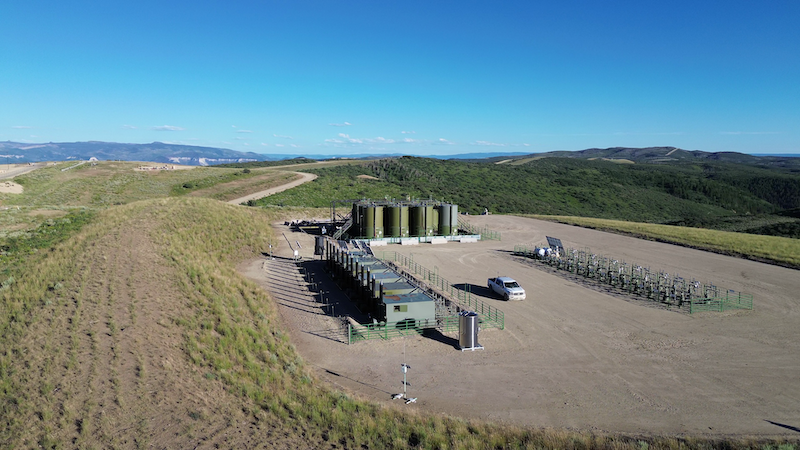
Kathairos has emerged as the leading North American solution for methane elimination from pneumatics, with more than 2,400 systems in operation across North America and over 70 major oil and gas producer partners.
In this post
When it comes to meeting methane emission requirements in remote oil and gas operations, reliability isn’t just a feature — it’s a necessity. The rise of off-grid emission abatement technologies offers a range of options, but not all systems are created equal. From regulatory compliance to site uptime and maintenance needs, the right choice can mean the difference between smooth operations and unexpected downtime.
At Kathairos, we’ve built our methane elimination technology with long-term field success in mind. Here's how off-grid systems like ours support remote operations — and why Kathairos stands apart from solar- and battery-based alternatives.
How Do Off-Grid Emission Abatement Systems Support Long-Term Operations?
Remote well sites often lack access to grid power, making off-grid solutions essential. But to be viable in the long run, those systems must be built for endurance, autonomy, and simplicity.
Kathairos uses liquid nitrogen to power pneumatic devices with zero emissions — no combustion, no methane venting, and no electricity required. This self-contained system functions independently, even in extreme environments. Without reliance on the grid or intermittent power sources, our technology ensures consistent methane elimination while minimizing maintenance costs.
In short: off-grid doesn’t have to mean high-maintenance. Kathairos keeps it simple, clean, and dependable.
Which Methane Elimination Systems Require Little Operator Intervention?
Many so-called “low-emission” systems still depend on manual oversight, battery charging, or daily checks — especially in unpredictable conditions. That’s where passive solutions like Kathairos make a major impact.
Once installed, our nitrogen-powered systems quietly go to work, replacing methane in pneumatic controls with a clean, inert alternative. No moving parts. No flaring. No fuel.
This low-touch approach dramatically reduces the need for operator intervention, freeing up field teams to focus on higher-value work. With no complex electronics, the system becomes virtually invisible — doing its job silently and reliably in the background.
What Makes Kathairos More Reliable Than Solar and Battery Systems?
While solar- and battery-powered systems offer a renewable option, they come with real-world limitations — particularly in off-grid environments. Harsh winters, cloudy weather, and battery degradation can interrupt power supply, resulting in downtime, data loss, or regulatory non-compliance.
Kathairos avoids those risks entirely. Our system does not depend on sunlight or electrical storage. Liquid nitrogen provides a stable, high-capacity energy source that is unaffected by weather, dust, temperature swings, or seasonal variability. There are no panels to clean, no batteries to swap, and no electronics to fail.
With fewer points of failure, Kathairos delivers unparalleled reliability, making it a trusted partner for producers looking to eliminate methane emissions — without complicating operations.
Final Thoughts
In the race to reduce methane emissions and meet regulatory deadlines, oil and gas operators need technology that works with — not against — the realities of the field. Kathairos provides a zero-emission, low-maintenance solution that’s purpose-built for the long haul.
If you’re evaluating methane elimination vendors, look for a proven track record, passive performance, and the ability to thrive off-grid without compromise. That’s what Kathairos delivers — every time.

.png)

